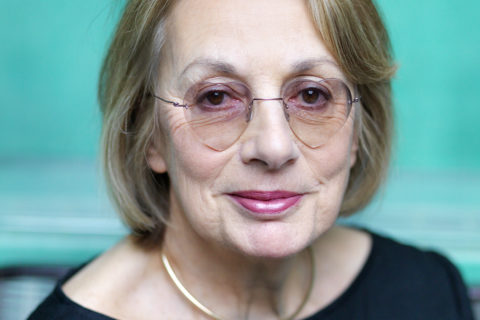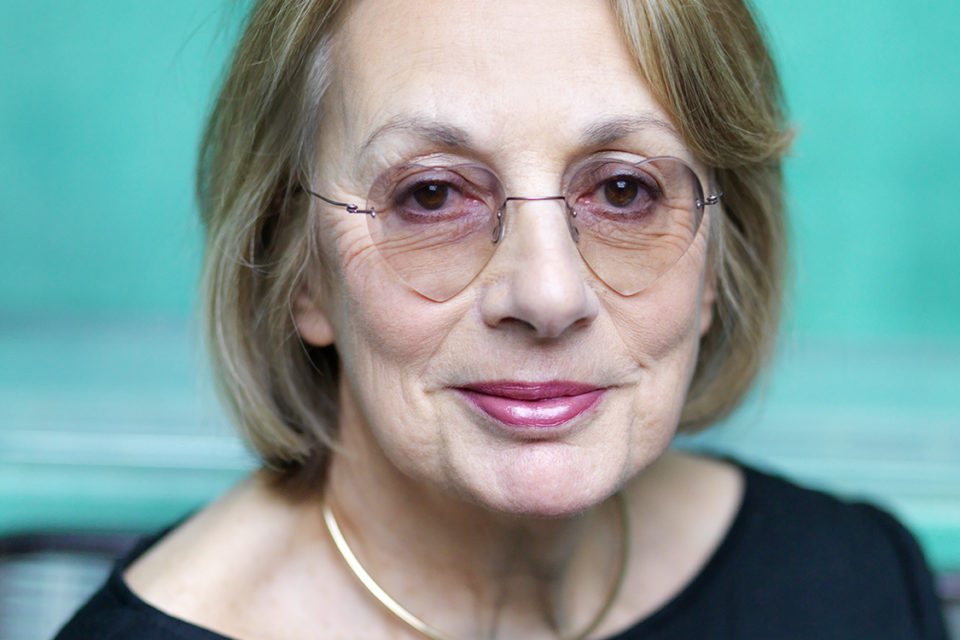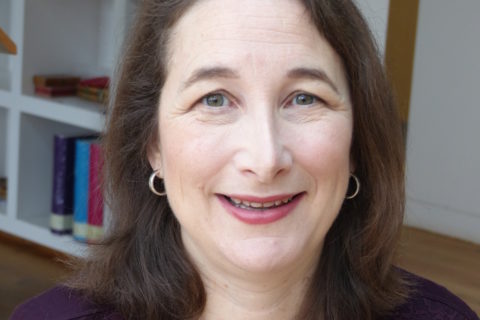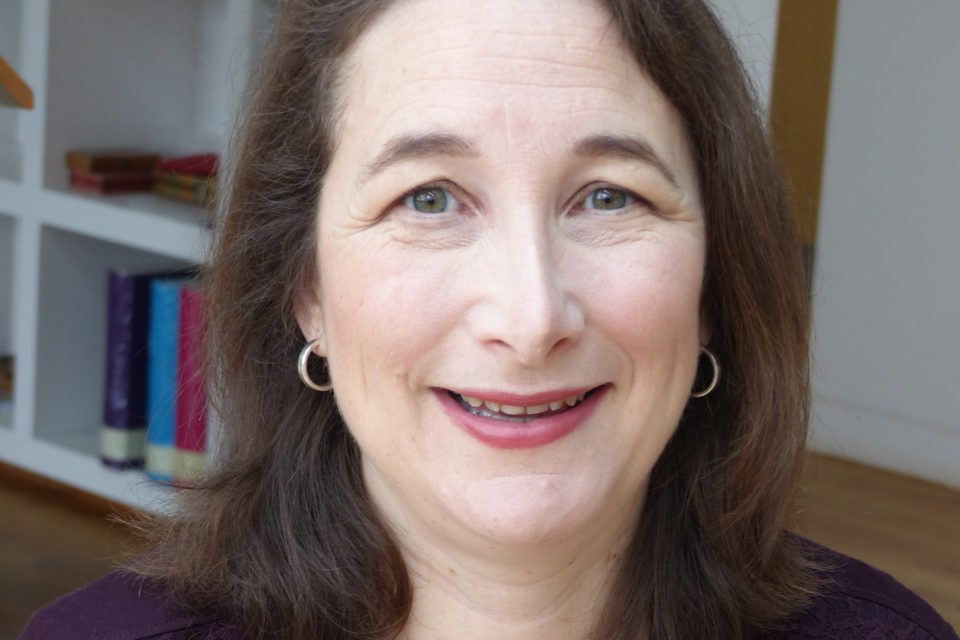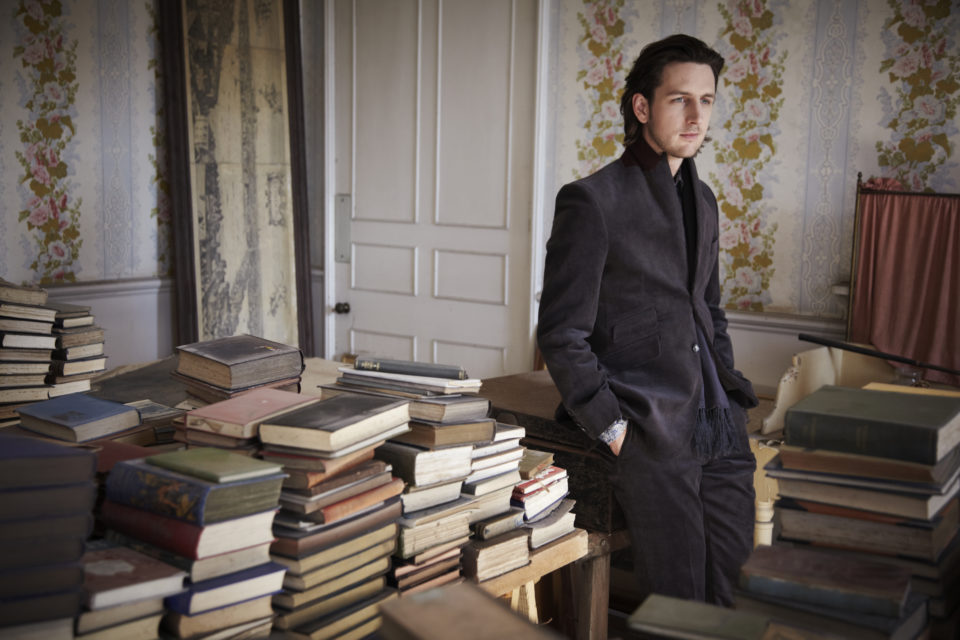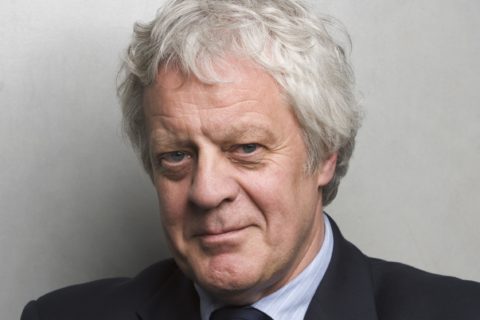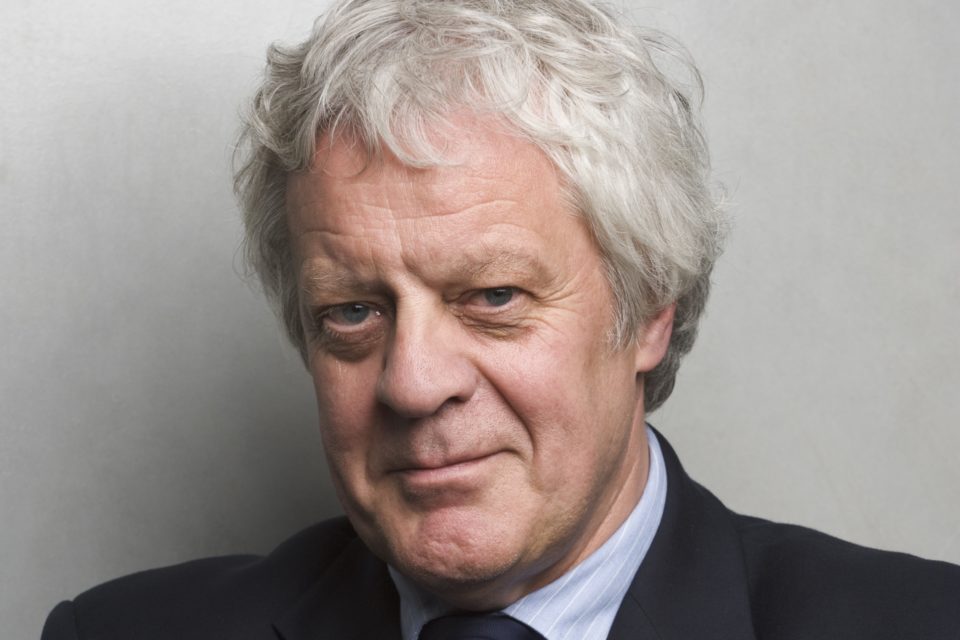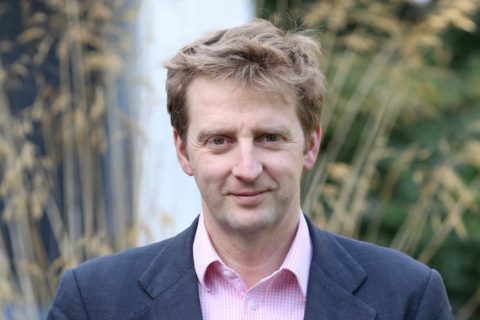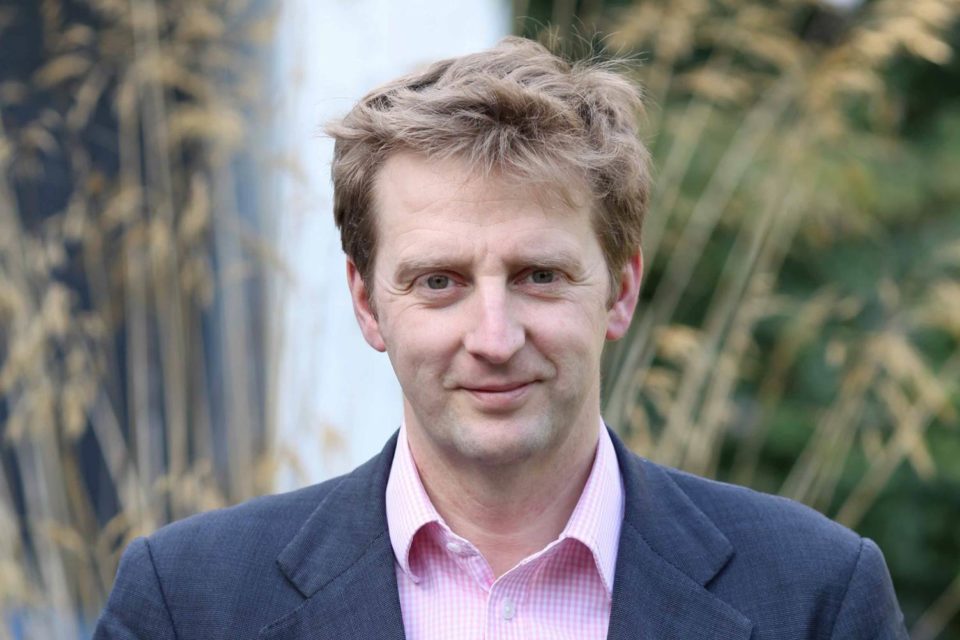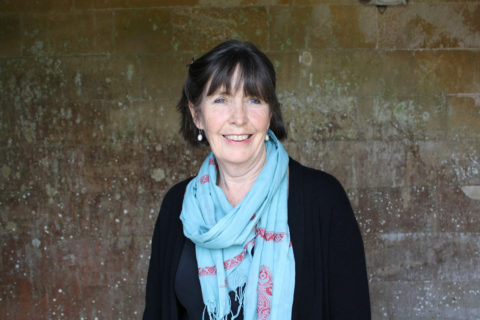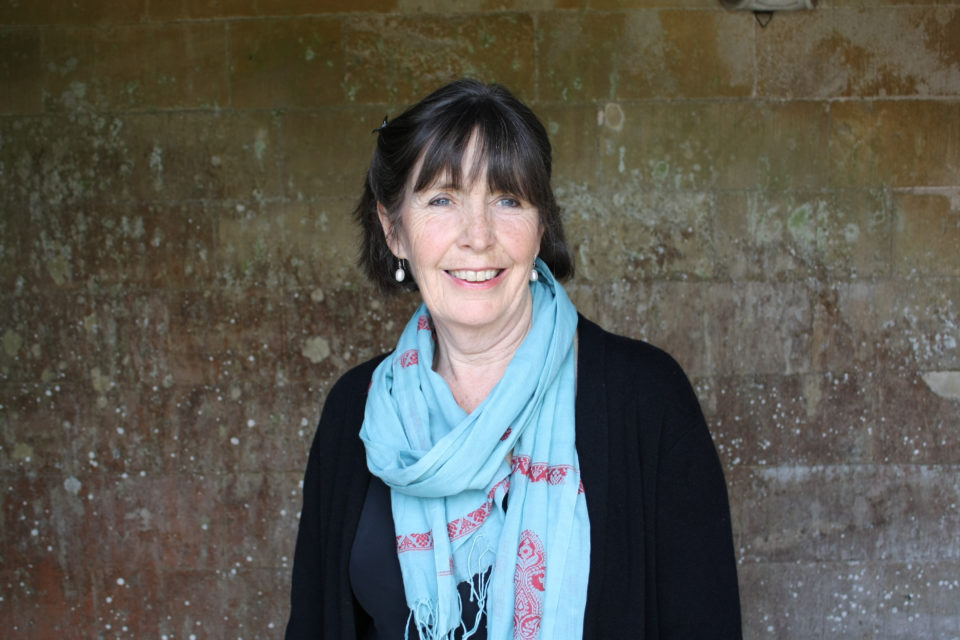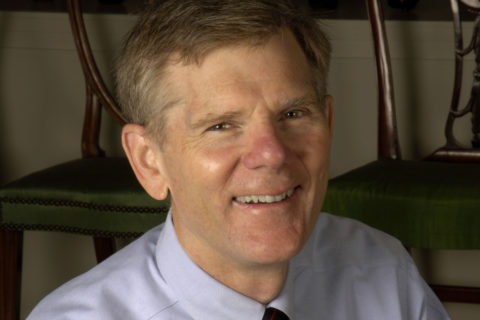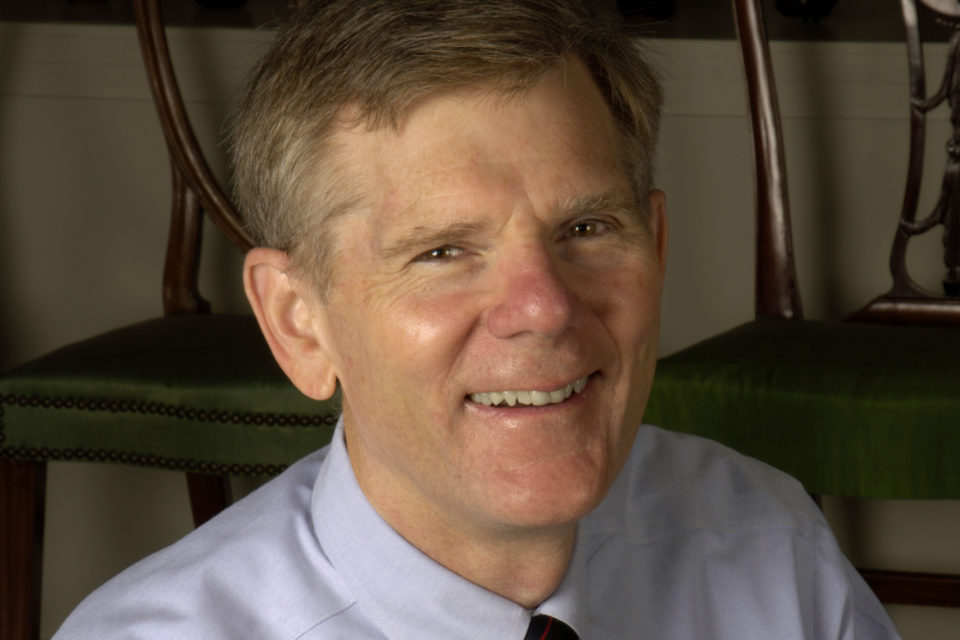Royal Oak’s speakers are engaging, knowledgeable experts with a passion for a variety of topics related to The Royal Oak Foundation’s mission.
Nicholas Ashley-Cooper
12th Earl of Shaftesbury
Phil Reed
OBE
William Cavendish
Earl of Burlington
Mary Miers
Architectural Historian and Author
Clare Asquith
The Countess of Oxford and Asquith
Brock Jobe
Professor Emeritus of American Decorative Arts, Winterthur Museum
Nina’s career began at nineteen when she went to work for John Fowler at Colefax & Fowler. She soon set up her own decorating business where her first commissions included a castle in Scotland and Annabel’s private members’ club in London. In 1974 Nina established her own interior design practice and studio where she creates a successful fabric and wallpaper collection internationally distributed by Osborne & Little. She has retail shops for home accessories and gifts in London’s Knightsbridge and Design Center East, Chelsea Harbour which also houses her extensive furniture collection. Nina is the author of 6 books on interior design, the latest launching in September 2018. Her many awards and honors include an Honorary Doctorate from the University of Middlesex (2001), the Royal Oak Timeless Design Award (2003), the American Fashion Award for ‘the woman who has most influenced style internationally’ and she became a Legend of the Pratt Institute in 2015. She is a Trustee of Bath Spa University.
Nina Campbell
50 Years in Design
Nina will take you on a beautiful, inspiring and global design adventure visiting some of her latest Interior Design projects featured in her new book, Nina Campbell Interior Decoration: Elegance & Ease. She will also give you a little biographical insight of where it all began and how she got to where she is today with many an entertaining tale along the way. Her own homes over the last 50 years will also be part of the talk to see how her own design aesthetic has changed during the last decades and how her style has both evolved and stayed sympathetic to the times to maintain her famous contemporary but classic style.
Make reservations for:
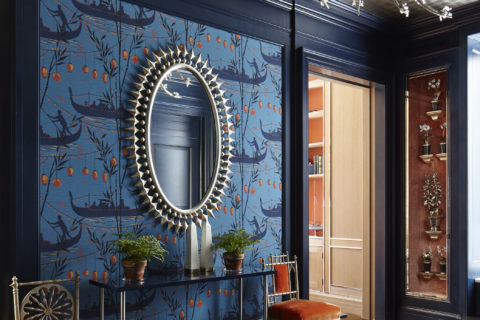
© Nina Campbell by Giles Kime, Rizzoli New York, 2018
Her research focuses on the expression of personality through place, interpreting the biography of buildings and collections. Since starting her career with the Landmark Trust, she has worked for English Heritage and the National Trust, curating the homes of scientists (Darwin), politicians (Churchill) and writers (Shaw). She is head of Research and Specialist Advice for the National Trust.
Behind Closed Doors
Stepping into Bloomsbury Rooms
This talk explores the homes of three writers linked to the Bloomsbury Group: Virginia Woolf, Vita Sackville-West and Eddy Sackville-West. The Bloomsbury Group was a set of writers and artists who met in the Bloomsbury area of London, challenging the conventions of their Victorian predecessors in person, and in books like Lytton Strachey’s Eminent Victorians. Linked by a complex web of relationships, Virginia, Vita and Eddy created country retreats which expressed their unusual personalities.
At Monk’s House, Virginia Woolf looked forward to the modern age, favoring the bright colors and bold patterns of her favorite Bloomsbury artists Vanessa Bell and Duncan Grant. At Sissinghurst, Vita Sackville-West looked back to the past and the Elizabethan age, filling her rooms with the romantic relics of former lovers. At Knole, Vita’s first cousin Eddy mixed Sackville heirlooms with the vibrant works of his artist lovers Duncan Grant, Stephen Tomlin and John Banting. Virginia Woolf combined the characters of Vita and Eddy in her novel Orlando—published in 1928 and set at Knole—creating a hero/heroine who changes their sex over time.
Descended from a family at the heart of Bloomsbury, Nino Strachey will offer a personal perspective on the stories revealed in her new book Rooms of Their Own: Eddy Sackville-West, Virginia Woolf and Vita Sackville-West (Pavilion Books, 2018).
Make reservations for:
- Charleston at The Charleston Library Society | Tuesday, October 2 | 6:00 p.m.
- La Jolla at La Jolla Woman’s Club | Wednesday, September 26 | 6:45 p.m.
- Los Angeles at The Beverly Hills Women’s Club | Tuesday, September 25 | 7:15 p.m.
- New York at The General Society Library | Thursday, October 4 | 6:15 p.m.
- Philadelphia at The Union League of Philadelphia | Monday, October 1 | 6:30 p.m.
- San Francisco at Arader Galleries | Thursday, September 27 | 7:00 p.m.
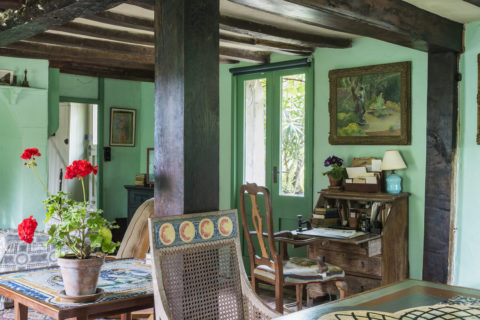
The Sitting Room at Monk’s House, East Sussex ©National Trust Images/Andreas von Einsiedel
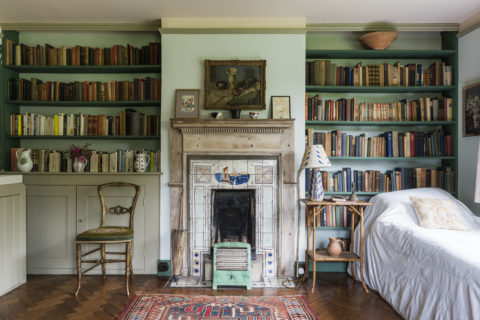
Virginia Woolf’s bedroom at Monk’s House, East Sussex ©National Trust Images/Andreas von Einsiedel
Carl trained at French Culinary Institute as well as the Institute for Culinary Education and holds a diploma in Culinary Arts. He has taught recreational cooking classes throughout New York City and has lectured on food history for the Merchant’s House Museum, the National Arts Club, the Metropolitan Opera Guild, St. George’s Society, Historic Royal Palaces and the English Speaking Union. He was a contributing writer on SAVORING GOTHAM: A Food Lover’s Companion to New York City (Oxford University Press) and is at work on his own book, a culinary history of the Gilded Age.
From Dickens to Downton
Victorian and Edwardian Food
From Dickens to Downton: Victorian and Edwardian Food is a journey through British food and dining traditions from the mid-19th century through the early part of the 20th century. Beginning with a look at food references in the work of Charles Dickens, which helped establish some of Britain’s most cherished culinary traditions, the talk will continue all the way through to the world of great town and country houses known to lovers of Downton Abbey and Upstairs Downstairs. This talk will take a look at dining tables both upstairs and downstairs, as well as inside and outside the house, including some National Trust properties such as Petworth House and Standen House. Carl Raymond, food historian, writer and lecturer, will lead the audience on an illustrated tour of some of the classic dishes of the Victorian and Edwardian periods. He will also discuss their background, how they were prepared, and how they were served. He will talk about cultural and social trends, and influences, that affected eating and entertaining from the Industrial Revolution to the beginning of World War I.
Make reservations for:
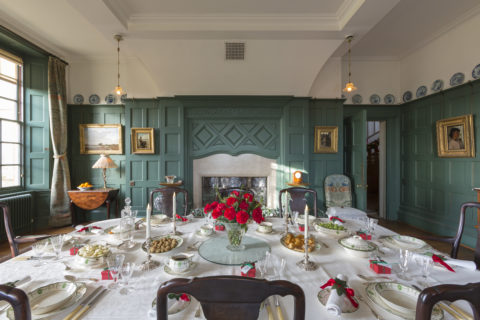
The dining table, decorated and set for Christmas dinner, in the Dining Room at Standen House and Garden, West Sussex. ©National Trust Images/Chris Lacey
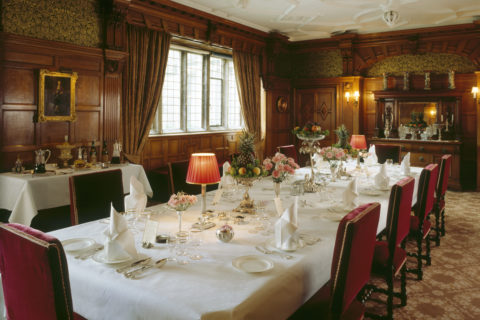
The Victorian dining room at Lanhydrock, Cornwall ©National Trust Images Andreas von Einsiedel
He has this year been elected as a Fellow of the Society of Antiquaries and sits on a number of boards and trusts including the Country House Foundation. He was awarded an M Phil in Renaissance History at the Warburg Institute, University of London, in 1989 and was Architectural Editor of Country Life from 1995-2008. Before joining Country Life in 1995, Mr. Musson was an assistant regional curator for the National Trust in East Anglia, curating historic houses such as Ickworth House, and at the same time setting up the research and interpretation of new sites such as, the ex-bomb testing range and nature reserve at Orford Ness in Suffolk. He has written and edited hundreds of articles on historic country houses, from Garsington Manor to Knebworth House. Mr. Musson also presented 14 programs on BBC 2, making up two series called The Curious House Guest, in 2005-07, and he also lectures and supervises for academic programs with Cambridge University, London University and Buckingham University, and the Attingham Summer School. His books include How to Read a Country House (2007), Up and Down Stairs: The History of the English Country House Servant (2009), English Country House Interiors (2011), and Robert Adam: Country House Design, Decoration & the Art of Elegance (2017). His latest book, The Country House: Past, Present, Future: Great Houses of The British Isles, is due for publication in the US in October 2018.
The Country House Past, Present, Future
Great British Houses
With their extraordinary histories, grand architecture and interiors, and sublime landscapes, British country houses have long been a subject of fascination to a wide audience. Jeremy Musson, one of Britain’s leading architectural historians, will draw back the curtain on the story of many of Britain’s finest and most important historic homes to offer a fresh look at their significance and meaning. Since the medieval period, the creation of a country house has been fueled by politics and power, and shaped by money, site, available materials, changing building technologies, and personal ambitions and shifting fashions. The country house had many functions—as places of habitation, entertainment, estate administration, and political status—which were traditionally all folded into one solid and glorious material place.
Using the finest new—and old—photographs, as well paintings, prints and drawings, Mr. Musson will take his audience on a revelatory visual journey through the world of the great house, including many important National Trust properties: Cragside, Kingston Lacy, Blickling Hall, and Bodiam Castle, as well as privately-held houses such as Blenheim Palace, Burghley House and Warwick Castle. He will explore the essential skills necessary to build a country house and the aesthetic prestige embedded in their decoration and furnishing, as well as what their libraries and chapels tell us about changing ideas, and how the country estate was arranged for the pursuit of pleasure. He will also look at the state of the country house today and what the future holds for this iconic feature of British culture.
His lecture coincides with the publication of the book he co-edited with Sir David Cannadine, The Country House: Past, Present, Future: Great Houses of The British Isles, co-sponsored by The Royal Oak Foundation, which includes essays by several leading nationally recognized experts exploring the changing identity of the British country house.
Make reservations for:
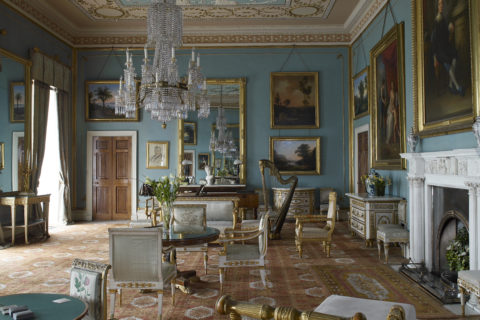
The Drawing Room, Attingham Park, Shropshire. ©National Trust Images/Paul Baker
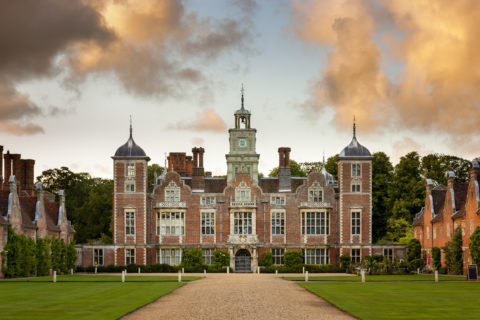
The South Front at Blickling Estate, Norfolk. ©National Trust Images/Andrew Butler
Nicholas Edmund Anthony Ashley-Cooper graduated from the London Business School with an M.B.A. After an early career in music in New York City, he inherited the earldom in 2005 and has since then overseen the restoration of the family seat, St Giles House. He is an extreme athlete, running marathons to benefit charitable organizations addressing the needs of people with disabilities—including races across the Sahara, Atacama and Gobi deserts. He is the first Shaftesbury in 50 years to live in the house, alongside his wife Dinah and their three children.
St. Giles House
The Rebirth of an English Country House
In 2012, Nicholas Edmund Anthony Ashley-Cooper, the 12th Earl of Shaftesbury, and his wife became the first people to live in St Giles House, Dorset, since the death of his great-grandfather in 1961. The Grade I listed building had been the family home since the 1400’s, but like many English country houses, it fell into disrepair following World War II. The family relocated nearby, selling many of the house’s exquisite pieces of furniture and objects. St. Giles House, slowly crumbling, appeared on the English Heritage “Buildings at Risk” register due to its perilous state of near collapse. As the Earl explained, “the world had moved on, leaving the house behind to fall slowly into ruin.” After several family tragedies, Nicholas unexpectedly inherited the title and house at age 26. Rather than shying away from the daunting house project—which in some areas had no electricity or plumbing—the new Earl was determined to make St. Giles inhabitable as his family home. His award-winning restoration first described in the New York Times and in World of Interiors is now illustrated in a new Rizzoli book (September 2018). Lord Shaftesbury’s talk will explain his sudden inheritance, as well as describe his personal trials and tribulations, and eventual successes with the renaissance of St. Giles. He will show dramatic before-and-after photos, from the interiors to the grounds and gardens, which offer a front row seat into the house’s dramatic transformations. The result is a testament to his resilience to honor his family’s past while embracing 21st century living.
Make reservations for:

The Library at St Giles House © 2018 by Justin Barton
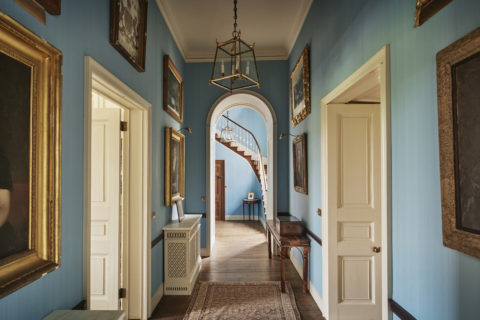
The Hall & Landing at St Giles House © 2018 by Justin Barton
In 1993 he became Director of the Cabinet War Rooms (a branch of the Imperial War Museum), and from 1995 to 2005 he was the driving force behind the campaign to create the Churchill Museum at the Cabinet War Rooms (now known as the Churchill War Rooms) which was opened by Her Majesty The Queen in February 2005. Under his leadership, the Churchill War Rooms has won many awards, including the 2006 Council of Europe Museum Prize.
From 2008 to 2010 Phil also served as the Executive Director of the Churchill Centre (now known as The International Churchill Society), and in 2008 he was awarded the Order of the British Empire (OBE) in the New Year’s Honours List for services to Museums.
In May 2010 Phil assumed the additional responsibility of the directorship of HMS Belfast, while remaining Director of the Churchill War Rooms and, in January 2014, was appointed Executive Vice President of the American Air Museum in Britain, which is located at Duxford airfield, Cambridgeshire, a branch of the Imperial War Museums. Phil retired after 41 years’ service in March 2016, but will continue to support Imperial War Museums, particularly in his continued role as Executive Vice President of the American Air Museum.
Churchill
And the Cabinet War Rooms
History was made in the Cabinet War Rooms—an underground bunker hidden beneath the streets of Westminster—a nerve center where Winston Churchill and his inner circle directed the Second World War. Preserved and opened by the Imperial War Museum in 1984, the War Rooms are a popular London destination. Phil Reed, Director from 1993 to 2016, expanded the Cabinet War Rooms and developed the Churchill Museum, opened by Her Majesty The Queen in 2005. Phil’s lecture will describe the evolution of the Cabinet War Rooms, alongside the evolution of Winston Churchill from schoolboy, to statesman, and finally to the global icon he is today. Indeed, the Oscar-winning film Darkest Hour, for which Phil served as the historical consultant, put Winston Churchill firmly back on center stage 50 years after his death and lionized him for later generations. Phil will talk about how the film portrayed Churchill as a man, rather than the demi-god he is so often portrayed as today. He will track Churchill’s development, his public persona, and his self-perception, while sharing unique insights into the making of the most successful cinematic portrayal of Churchill to date. He will guide us through the labyrinth of rooms and corridors that sheltered the Prime Minister and his cabinet from the German bombing raids, and explore the highlights of the Churchill Museum to convey the story of Churchill’s life and legacy.
Make reservations for:

Portrait of Winston Churchill
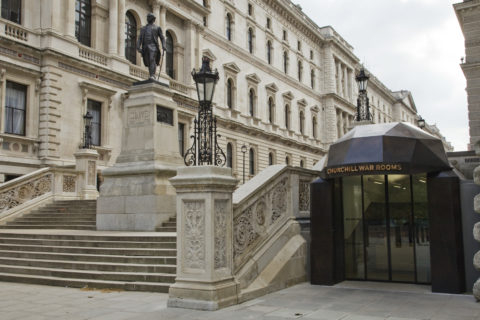
Churchill War Room Front
Formerly a photographer, Lord Burlington now works full time for his family businesses in the UK and Ireland, for which he chairs the family’s sustainability and social responsibility steering group, among other things. Lord Burlington has a passion for education and is Chairman of the Devonshire Educational Trust, which oversees approximately 20,000 educational visits per year and in 2016 he co-founded the now annual Towers and Tales children’s literary festival at Lismore Castle. In March 2018 Lord Burlington became the Chancellor of the University of Derby. He is a committed believer in continued professional development and has recently been studying entrepreneurship and strategy at Harvard Business School, as well as Museum Leadership at the Getty Institute in Los Angeles. He is married to Laura Cavendish, who spoke to Royal Oak audiences last fall on the history of fashion at Chatsworth. They have three children under the age of ten and divide their time between the UK and County Waterford, Ireland. Click here to visit Lismore Castle’s Instagram account: @lismore_castle.
Lismore Castle
‘Built by King John, plumbed by Adele Astaire’
When Paddy Leigh Fermor wrote this in a letter to The Duchess of Devonshire (“Debo”), Lismore Castle in County Waterford, Ireland, had been in the Cavendish family for centuries, since it was built by King John in 1185 and purchased from Sir Walter Raleigh in 1602. Since that time Lismore has been besieged, lain derelict, rebuilt and redecorated. The 6th Duke of Devonshire was responsible for the castle’s renovations from 1812-1822 that resulted in its present Gothic Revival appearance. During the mid-19th century, Sir Joseph Paxton (the designer of The Crystal Palace) made additions to the battlemented turrets and façade, while John Gregory Crace, the leading maker of Gothic Revival furniture, and his partner designer A.W.N. Pugin were commissioned to transform the ruined chapel into a medieval-style banqueting hall. The hall has huge perpendicular stained-glass window, choir-stalls and Gothic stenciling on the walls and roof timbers. Pugin also designed chimney-pieces and furnishings and the castle contains some of the finest examples of domestic Pugin furniture still in private hands. The most recent renovations done by William Cavendish, Earl of Burlington, and his wife Laura bring the castle into the 21st century. In 2005 Lord Burlington converted the derelict West Wing into a state-of-the-art contemporary gallery and arts center. Since then Lismore Castle Arts has organized over 50 exhibitions along with an annual program of lectures, residencies and workshops. Lord Burlington will give Royal Oak members an illustrated personal tour of Lismore castle, where Adele Astaire, wife of the younger son of the 9th Duke of Devonshire—and also sister and former dancing partner of Fred Astaire— lived until her husband’s death in 1941. Lord Burlington will guide us through the Castle’s fluctuating 800 year history; show the remarkable Pugin interiors; trace the Cavendish family’s American connections; and explain how the castle has evolved into a much loved family home, as well as a center for international contemporary art and education.
Make reservations for:

Aerial view of the Lismore Castle.

The Pugin Banqueting Hall, Lismore Castle
She works as Fine Arts and Books Editor for Country Life, commuting each week from her home in the Highlands of Scotland to the magazine’s offices in the south of England. Her books include: American Houses: The Architecture of Fairfax & Sammons; The English Country House; The Western Seaboard: an Illustrated Architectural Guide and Highlands & Islands: an Anthology of Poetry of Place. Her latest book and the subject of her talk is Highland Retreats: The Architecture and Interiors of Scotland’s Romantic North (Rizzoli 2017).
Highland Retreats
The Architecture and Interiors of Scotland’s Romantic North
Until the late 18th century, northern Scotland was regarded by outsiders as an alien, barbaric country into which only a few intrepid travelers dared to venture. The Jacobite rebellions reinforced the impression that the Highlands were a lawless land scarred by centuries of clan feuds and economic crises. However, the Romantic Movement in literature and art changed that perception through images of the Celtic hero in sublime settings, attracting painters and writers such as Walter Scott, William Wordsworth, John Keats and J.M.W. Turner and precipitating tourism to the Highlands. Simultaneously, the north of Scotland was appropriated as a holiday playground for the rich, many of whom were attracted by the sporting potential of its pristine rivers and glens teeming with wildlife. Newcomers adopted the region as a recreational paradise and left an astonishing legacy of architecture and decoration inspired by the romance of the ‘reinvented’ Highlands. Known as shooting lodges because they were designed principally to accommodate the parties that flocked north for the annual sporting season, these houses range from Picturesque cottages ornées and Scotch Baronial castles to Arts and Crafts mansions and modern eco-lodges. While their designs responded to some of Britain’s wildest and most stirring landscapes, inside many were equipped with the latest domestic technology and boasted opulent decoration and furnishings from the smartest London and Parisian firms. Historian and author Mary Miers will explore the history and social context of these houses, some of which survive in their original state and are still owned by descendants of the families who built them. She will illustrate her talk with ravishing photographs from the famous Country Life Picture Library, combined with many historic images that have been previously unpublished.
Make reservations for:
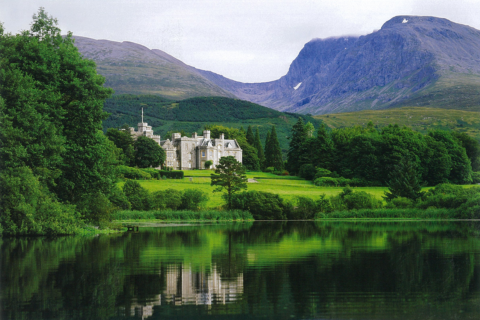
Inverlochy Castle © Inverlochy Castle Hotel
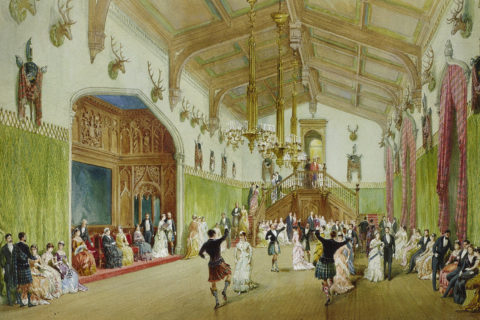
William Simpson The Ballroom Balmoral Castle 1882. Royal Collection Trust © Her Majesty Queen Elizabeth II 2016
She is the author of Shadowplay: The Hidden Beliefs and Coded Politics of William Shakespeare. She lectures on Shakespeare in the United Kingdom and North America and has written about 16th century coded messages in the Shakespeare Newsletter and Times Literary Supplement. Her new book, Shakespeare and the Resistance: The Earl of Southampton, the Essex Rebellion, and the Poems that Challenged Tudor Tyranny comes out in August 2018. She lives in Somerset with her husband and five children.
Shakespeare and the Resistance
Poems that Challenged Tudor Tyranny
As the year 1600 approached, unrest was stirring in post-Reformation England as many of the elite questioned the monarchy and pitted themselves against Queen Elizabeth’s regime. Amidst the tension, William Shakespeare published a pair of narrative poems dedicated to the young Earl of Southampton, which would quickly become bestsellers: Venus and Adonis in 1593 and The Rape of Lucrece one year later. Although wildly popular during Shakespeare’s lifetime, both works are rarely studied today. To modern readers, they are meandering, dense and dull. However, Shakespearean scholar Clare Asquith, Countess of Oxford and Asquith, will reveal the provocative political message that would have been apparent to Shakespeare’s original readers. In her lecture she will discuss how anti-royalists would readily understand the parallels between Lucrece’s fate and contemporary history—from their viewpoint that England was being violated by a turbulent and tyrannical monarchy that had stolen thousands of square miles of land, schools, hospitals, and libraries from religious institutions and the English people. Lady Asquith will explain how Shakespeare’s political poems gave England’s restless populace and disenfranchised nobility a historical analysis that justified—and even urged— direct action against the Tudor regime. This crisis of allegiance would eventually erupt in armed rebellion on the streets of London, and eventually drag a divided country into civil war.
Make reservations for:
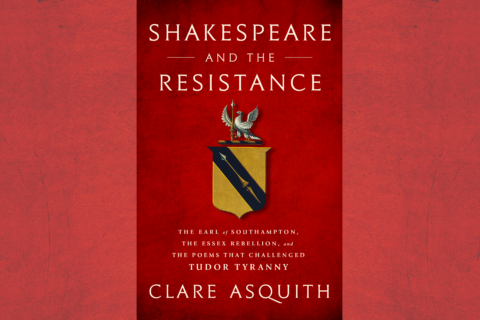
Clare Asquith – Book Cover
After a 28-year career as a museum curator and administrator at the Museum of Fine Arts, Boston, Colonial Williamsburg, the Society for the Preservation of New England Antiquities (now Historic New England), and Winterthur. Between 2010 and 2014, Brock co-directed the collaborative project, Four Centuries of Massachusetts Furniture, which united eleven institutions in a celebration of Bay State furniture-making. He has authored or edited seven books and written dozens of articles. His newest publication, Crafting Excellence: The Furniture of Nathan Lumbard and His Circle, which he co-authored with Christie Jackson and Clark Pearce, appeared in January 2018. Brock is a recipient of the President’s Award from Old Sturbridge Village, the Award of Merit from the Antiques Dealers’ Association of America, the Eric M. Wunsch Award for Excellence in the American Arts, and the President’s Award from Historic Deerfield. He retired from his professorship in June 2015, but retains an office at Winterthur and continues to study, write, and lecture about American furniture.
Chippendale
The Man and the Myth
In Britain and America, no furniture maker is more famous than Thomas Chippendale. His designs reached both sides of the Atlantic through a groundbreaking pattern book, The Gentleman and Cabinet-Maker’s Director of 1754. During his lifetime he oversaw one of the largest furniture-making firms in London, and eventually his name defined an entire style of 18th-century furniture. Join Brock Jobe, Winterthur’s Professor Emeritus of American Decorative Arts, as he recounts the remarkable story of Chippendale’s career and takes us on an armchair tour of grand country houses in England and Scotland that feature the master craftsman’s greatest creations. Along the way, we will confront the truth as well as the fiction associated with this most fascinating fellow, Thomas Chippendale.
Make reservations for:
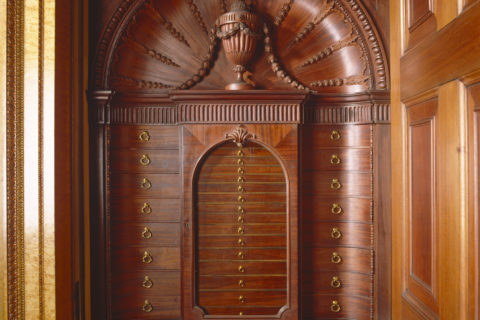
Close-up detail of the Chippendale medal cabinet dated 1767-8, Nostell Priory ©National Trust Images Andreas von Einsiedel
